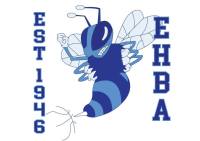Back Pain

Web Link http://hillsspinalsports.com.au
Most people will suffer from back pain at some point in their lives. Back pain is very common among athletes and may be the result of spine injuries such as fractures or sprains. Accidents, falls and direct blows to the back can also cause back. Back pain includes pain from the neck to the (coccyx) tailbone.
Cervicalgia is a pain in the neck that does not radiate down to the arm. Symptoms include sharp pain in the neck, aching and pain when turning the head sideways. You may be prescribed a cervical collar to help the muscles to rest. Whiplash is a common cause of neck pain. Application of ice to control pain, training in stretching and strengthening exercises form part of the physiotherapy program.
A direct blow to the back may result in a contusion - an injury in which the skin is not broken. Symptoms include pain, swelling or bruising over the area, difficulty in bending forwards, sideways or straightening. Muscle tears are graded according to the degree of the tear. With a grade 1 tear, you will feel tightness in the back, but may be able to walk properly and not have much swelling. Problems with walking and sudden twinges during activity may be symptoms of a grade 2 tear. There will also be some swelling and pain. With a grade 3 tear, pain is more severe and swelling appears immediately. Walking is difficult. For all of these problems, you should rest from exercises or physical activity and see us.
A physiotherapy evaluation for back pain includes a subjective history of the type of injury, symptoms and prior level of function. We may also ask questions about your sleeping posture and behavior of the symptoms during ADLs (activities of daily living) and other activities. An objective assessment follows, which includes an examination of your posture, gait, active range of motion of the spine, strength, reflexes and muscle flexibility.
A treatment plan will involve
- the use of modalities to reduce pain, such as ice packs, heat, transcutaneous electrical nerve stimulation (TENS) or ultrasound.
- Positioning for relief of pain and muscle spasm.
- Mobilisation to improve mobility of specific joints.
- Training in posture, body mechanics, strengthening and conditioning.
It is important that each injury be assessed by a physiotherapist as back pain is not a matter to be ignored. Our goal is to provide symptom relief, restore joint and soft tissue mobility and help you make a successful return to your activities.










